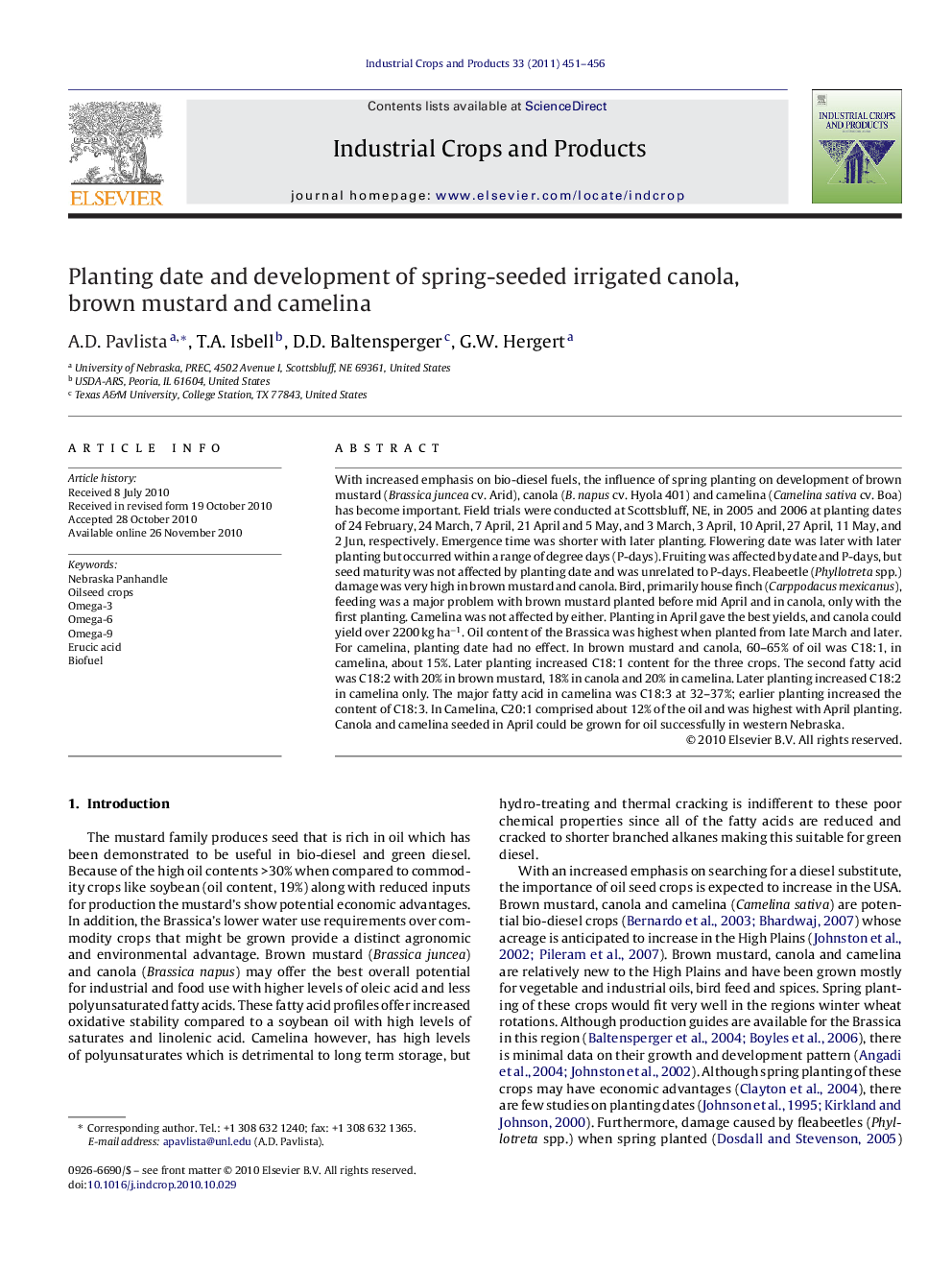| کد مقاله | کد نشریه | سال انتشار | مقاله انگلیسی | نسخه تمام متن |
|---|---|---|---|---|
| 6377643 | 1322216 | 2011 | 6 صفحه PDF | دانلود رایگان |

With increased emphasis on bio-diesel fuels, the influence of spring planting on development of brown mustard (Brassica juncea cv. Arid), canola (B. napus cv. Hyola 401) and camelina (Camelina sativa cv. Boa) has become important. Field trials were conducted at Scottsbluff, NE, in 2005 and 2006 at planting dates of 24 February, 24 March, 7 April, 21 April and 5 May, and 3 March, 3 April, 10 April, 27 April, 11 May, and 2 Jun, respectively. Emergence time was shorter with later planting. Flowering date was later with later planting but occurred within a range of degree days (P-days). Fruiting was affected by date and P-days, but seed maturity was not affected by planting date and was unrelated to P-days. Fleabeetle (Phyllotreta spp.) damage was very high in brown mustard and canola. Bird, primarily house finch (Carppodacus mexicanus), feeding was a major problem with brown mustard planted before mid April and in canola, only with the first planting. Camelina was not affected by either. Planting in April gave the best yields, and canola could yield over 2200 kg haâ1. Oil content of the Brassica was highest when planted from late March and later. For camelina, planting date had no effect. In brown mustard and canola, 60-65% of oil was C18:1, in camelina, about 15%. Later planting increased C18:1 content for the three crops. The second fatty acid was C18:2 with 20% in brown mustard, 18% in canola and 20% in camelina. Later planting increased C18:2 in camelina only. The major fatty acid in camelina was C18:3 at 32-37%; earlier planting increased the content of C18:3. In Camelina, C20:1 comprised about 12% of the oil and was highest with April planting. Canola and camelina seeded in April could be grown for oil successfully in western Nebraska.
Research highlightsⶠThis study examines the effect of spring planting dates in western Nebraska on brown mustard, canola and camelina on development stages, seed yield, and oil and fatty acid content. ⶠFlowering date was related to degree days as opposed to planting date. Brown mustard and canola were sensitive to fleabeetle and bird damage while camelina was not. ⶠYields were highest with April planting. Oil in the two Brassica comprised mostly of C18:1 (over 60%) and increased with later planting date. ⶠThe major fatty acid in Camelina was C18:3 comprising over 30% of the oil and highest with earlier planting date. ⶠConsidering yield and oil content, canola and camelina would grow well in western Nebraska.
Journal: Industrial Crops and Products - Volume 33, Issue 2, March 2011, Pages 451-456